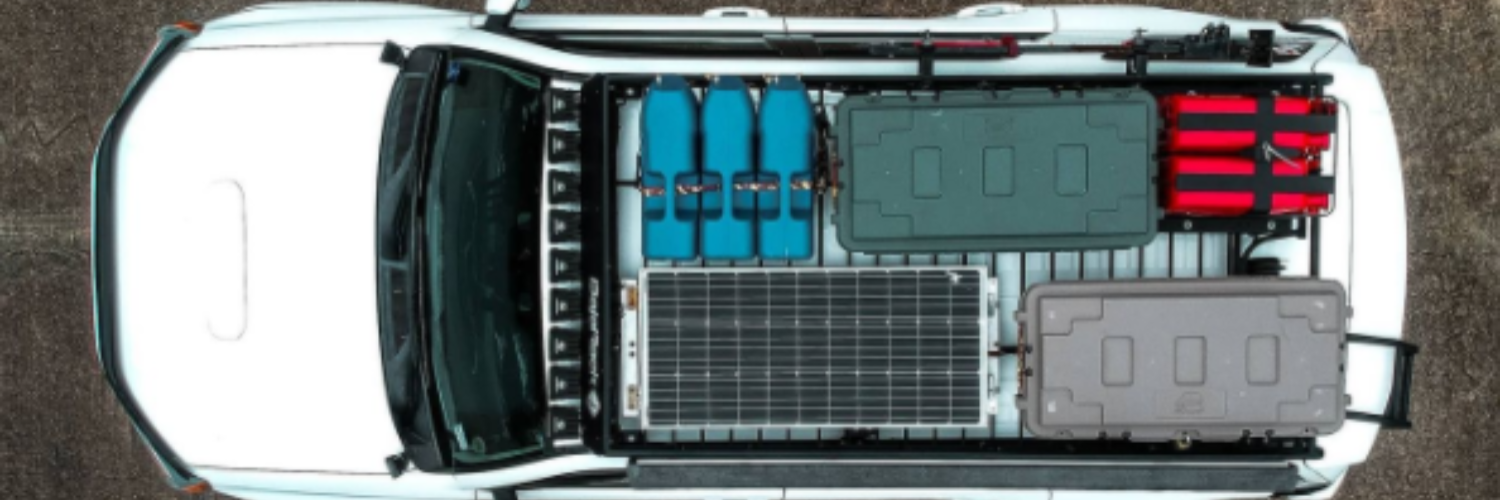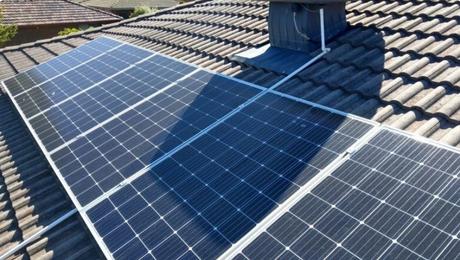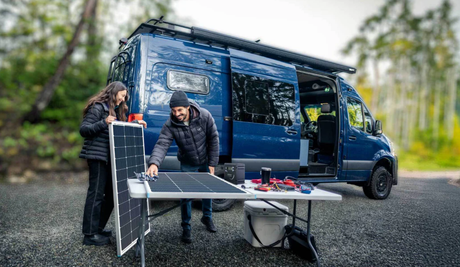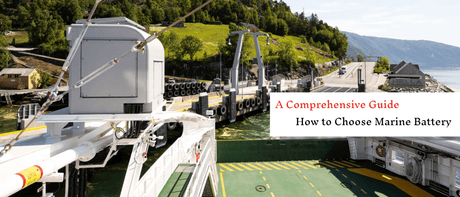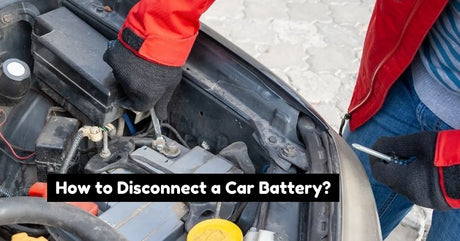Solar power has never been more popular in Canada, thanks largely to how simple installation has become with things like solar panel starter kits. Now, it’s easier than ever to help offset your carbon footprint while also saving money on your monthly utility bill.
Solar energy is a green, renewable power source, and thanks to years of technological developments, installing solar panels is well within reach of most homeowners. If you feel anxious about adding a solar system to your home, you don’t need to worry. Solar panel kits are easy to install, allowing you to quickly and easily start your green energy journey.
In this post, we’ll talk about what’s included in your solar starter kit, the process for solar panel installation , and other ways you can enhance your home’s solar power system. With a solar panel starter kit, bringing solar power into your home has never been easier.
What Is a Solar Panel Starter Kit?
Solar panel starter kits contain all the components you’ll need to start generating solar power at your home. Every solar panel installation charges batteries, and with the starter kit, you’ll have every piece you need to do just that.
Solar panel kits take the guesswork out of the process as all the parts are together in one easy, convenient package. You’ll also save time you would otherwise spend ordering each component individually.
While you can choose to have a professional install a solar system in your home, you’re likely looking at the cost of thousands of dollars. With a solar panel starter kit, your initial investment will be much lower. While these kits are not as comprehensive as a complete solar installation, these panels can help cut your energy dependence while allowing you to expand in the future.
Who Is a Solar Panel Starter Kit For?
Solar panel starter kits are, as you might expect, intended for beginners on the path to solar power. Many homeowners are eager to lower their monthly utility bills, while others are concerned about the impact of high-carbon energy production. The latter group wants to do their part to reduce our dependence on fossil fuels.
If you’re one of these homeowners, solar panel starter kits offer a low-cost, low-pressure way to explore how solar power can enhance your life. Once you discover the benefits of cheap, clean energy production, you can add more panels to upgrade your ability to generate power for your home.
What You Get with A Renogy Starter Kit
Renogy offers a wide range of solar panel starter kits, which you can choose based on your power needs and comfort level. Whether you’re looking for a panel to take camping or a powerful 800-watt solar panel kit, your kit includes all the components you need to start charging your solar battery bank.
Solar Panels
The key to any solar installation is, of course, the solar panels. Every solar panel contains several photovoltaic cells, which use sunlight to generate electricity. At Renogy, our solar panel starter kits come standard with 100-watt solar panels. For solar kits to produce higher power levels, you simply add additional 100-watt solar panels until you reach the desired level.
Charge Controller
While solar panels generate electricity, you can’t use that power directly from the solar panel itself. Not only would it be impossible to control the amount of energy flowing to your electronics, but most electronics run on alternating current (AC), while solar power is in direct current (DC). That’s why adding a battery to your solar panel starter kit is a necessity.
However, even batteries can’t be hooked up directly to the solar panel since the lack of power control can also harm batteries. Once your battery is charged, for instance, a solar panel would continue to supply power, eventually overloading the battery and potentially causing severe damage.
To control the power produced by your solar panels, you need something called a charge controllers. You can think of a charge controller as an on/off switch for your batteries.
When your battery is low on power, the charge controller allows electricity to flow from your panel to the battery. Once your battery is totally charged, it switches off that power flow until the battery needs more charging, protecting your equipment.
There are two types of charge controllers available: PWM controllers and MPPT controllers. Pulse width modulation, or PWM charge controllers, throttle the voltage from your solar panels to provide a consistent charge just above the battery’s voltage. While this gives you a reliably steady energy source, the drop in voltage makes a PWM controller much less efficient, losing about 20-25% of the power generated.
The other alternative, the maximum power point tracker (or MPPT charge controllers), doesn’t suffer the same level of power loss. Also known as “smart” converters, MPPT controllers manage the power flowing from your solar panels much more closely. They can adjust for several factors that can affect how efficiently your panels are producing power. As a result, you lose less energy during the charging process.
Tray Cables and Adaptor Kit
The charge controller is also a hub for connecting all of your components. Each solar panel starter kit comes with two 8’ tray cables and two 20’ adaptor cables. The tray cables allow you to connect your battery to the controller, while the adaptor kit connects the controller to your solar panels.
Branch Connectors
On solar power starter kits with more than one panel, you’ll need to be able to connect all of the panels as one unit before connecting it to your charge controller. Branch connectors provide a simple, waterproof way for you to wire your panels in parallel or series circuits.
Mounting Hardware
The final piece in each kit is the mounting Z brackets. These simple pieces of steel can attach to each of the long sides of your solar panels and screw onto your mounting surface. Your brackets provide you a secure connection that leaves room beneath the panel for cables to run.
How to Set Up a Solar Panel Starter Kit
Setting up your solar panel starter kit is quick and easy, and you should be able to handle the project yourself. Once you verify that your shipment contains all the parts and that they all appear in working order, you’re ready to start.
The first step is to attach your battery to the charge controller using the tray cables. Simply insert the wire ends into the controller, then connect the positive cable to the positive terminal on your battery, followed by the negative terminal. At this point, your controller should power on.
Next, connect your solar panels in parallel or series, depending on your needs. Once that’s done, you can join the panels to your charge controller using the adaptor kit. Your controller should show that the solar panels are correctly connected.
Finally, you can install the brackets on your panels, then install the panels on your mounting surface. Next, you can reconnect everything and start enjoying your new solar power installation.
Other Types of Solar Panel Kits
There are also several other solar kits available if you decide to move beyond the starter kit, including:
RV
Kits for RVs are for those looking to power their batteries while away from home. Each RV kit comes with longer tray cables and adaptor kits and includes waterproof housing for your cables. You can also mount your panels on your RV using either the Z brackets or if you want to avoid screwing into your RV, corner brackets, which are attached with adhesives.
Premium
Premium solar kits are for people looking to make a heavier commitment to their solar installation. Premium kits have more efficient solar panels, use MPPT controllers, and can be fused together to make them more watertight.
Other Things You’ll Need to Get Started
In order to get the most out of your solar panel starter kit, you’ll need two more components: A battery and an inverter.
Battery
Unlike the starter battery in your car, solar systems rely on deep cycle batteries. These batteries provide you sustained power over a long period. The best batteries available today are lithium-ion batteries, which are lighter, safer, and longer-lasting than older models. While you can still purchase other battery types, you’ll be best off investing in lithium-ion.
Inverter
In order to use the electricity you generate, you’ll need an inverter to charge the battery power from DC to AC. That allows you to power your electronics from your battery without damaging them or purchasing specialized equipment that runs on DC.
Just the Start
While a solar panel starter kit has everything you need to begin generating solar power, it doesn’t mean it’s the endpoint. If you find that your solar system is lowering your utility bills and reducing your dependence on high-emission fossil fuels, you can continually upgrade your system by adding panels and energy capacity. A starter kit is just that—a start. Enjoy your solar journey!

